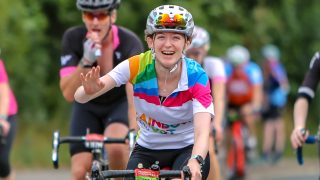People who have not ridden a bike for several years or indeed at all will have to start their training regime at least 4 months in advance of their trip. Mileage should be built up gradually to avoid injury and over-exercise, and to establish a good base fitness on which to build the stamina levels you will need on a cycle challenge.
A cycle ride every other day should be attempted for the first 4 weeks and the mileage should be between 5 and 10 miles, there is no need to over stretch the ride by pushing a gear that is too difficult, or riding as fast as you can, this can come later.
From the outset you should attempt to develop your cadence, which is the speed at which your legs rotate (RPM), this will improve your aerobic capacity meaning your heart and lungs will grow stronger and be less stressed when cycling or exercising.
To develop your cadence you should select the gear that feels most comfortable when you are cycling on whatever gradient. If you can keep a steady RPM of around 60 - 70 most of the time this would greatly aid the speed at which you become cycling fit, and will increase your strength and stamina which you can then build on.
Before you know it you will find yourself being able to push harder gears while maintaining the same RPM. After you have become comfortable with your cadence and riding position, it will be time to start stepping up the mileage. For the next 4 weeks you should attempt to ride 15 - 20 miles 3 times a week, with a Sunday ride every other weekend of about 25 miles.
By now you should be feeling really confident and starting to enjoy the sport of cycling. In the next 2 weeks it would be worth maintaining the same schedule but now starting to ride 20 - 25 miles three times a week with an alternate Sunday ride of 30 miles.
The following 2 weeks should see the introduction of an extra day’s cycling into your training, this day’s mileage may only be around 10 - 15 miles but it will help you get a feel for cycling day after day. It would now be a good idea to step up the Sunday rides to three a month with a mileage of 40 miles.
In the final three weeks your daily mileage should be around 30 miles on each outing and any Sunday rides should break 50 miles. A week before you leave for the trip you should wind down and perhaps attempt 3 short 10 - 15 mile rides




